Abstract
The Port Pirie Cohort Study is an ongoing prospective study of the relationship between exposure to environmental lead within a lead smelter community, and neuropsychological development in early childhood. Over 600 children, originally recruited during antenatal life, underwent serial blood lead estimations up to two years of age. Systematic interview information was collected on a range of variables, and formal developmental assessment (Bayley Scales of Infant Development) was carried out at 24 months of age. Blood lead concentrations measured antenatally (maternal), at delivery (maternal and umbilical cord) and postnatally at 6, 15 and 24 months were negatively correlated (p less than 0.05) with mental development at 24 months of age. Geometric mean blood lead concentrations (microgram/dl) were 14.3, 20.8 and 21.2 at 6, 15 and 24 months of age respectively. When multiple covariates, including maternal IQ, were controlled for in multiple regression analysis, a statistically significant (p less than 0.01) inverse association was observed between blood lead concentration (PbB) measured at 6 months of age and mental development at 2 years of age. No such association was evident for psychomotor development. When the quality of the home environment (HOME Score) was added to the multiple regression model, the inverse association between blood lead concentration at 6 months of age and mental development at 2 years persisted, albeit less strongly (p = 0.07). From this analysis, it is estimated that a child with with PbB of 30 micrograms/dl at age 6 months will have a deficit of 3.3 points (approximately 3%) on the Bayley Mental Development Scale relative to a child with PbB of 10 micrograms/dl.
Full text
PDF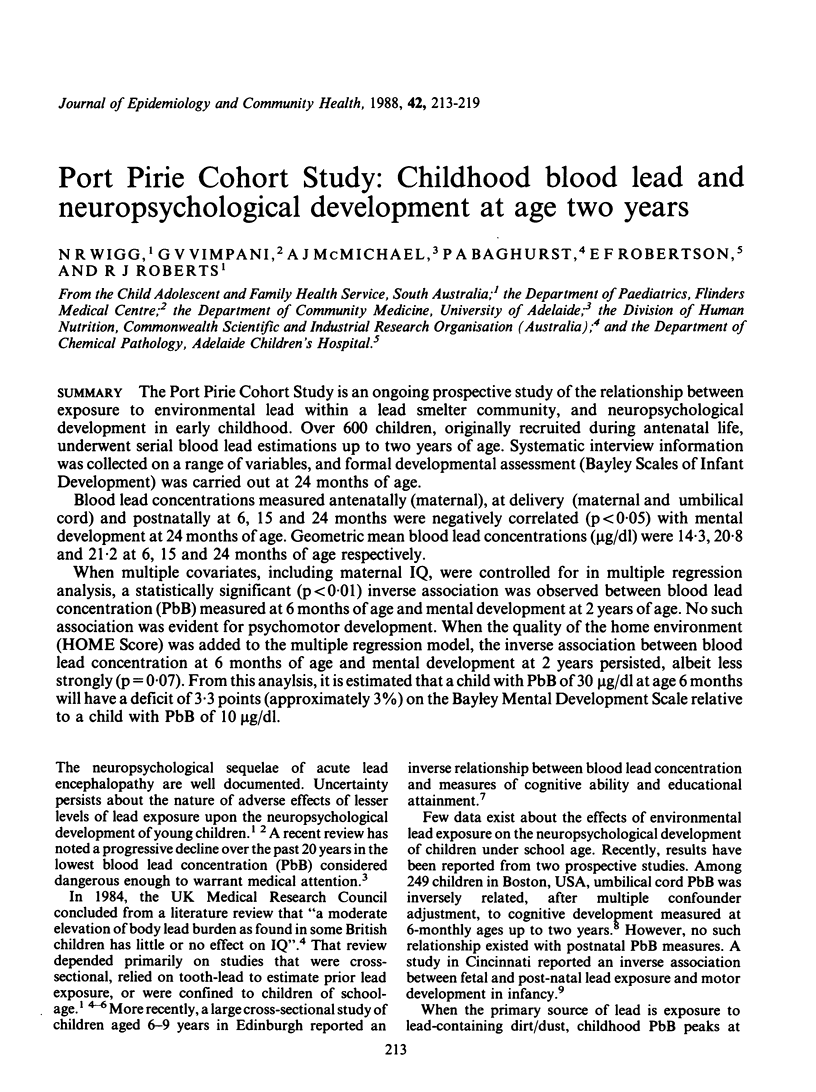
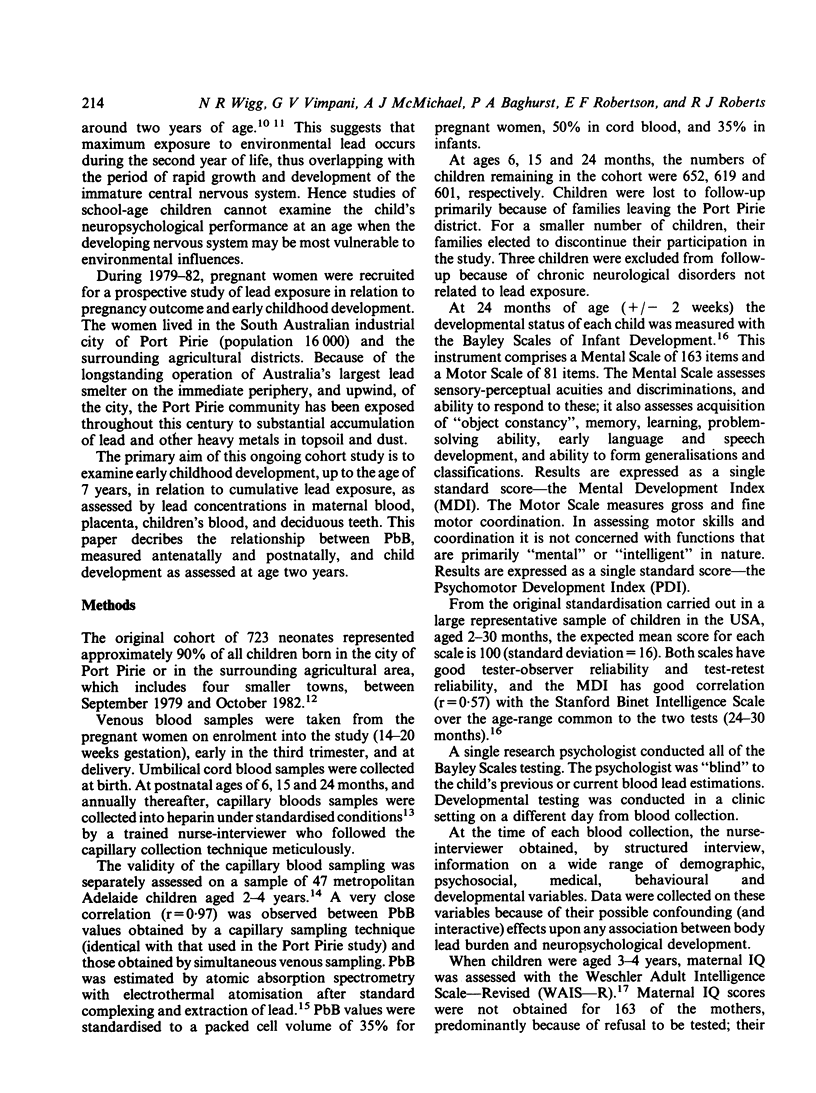
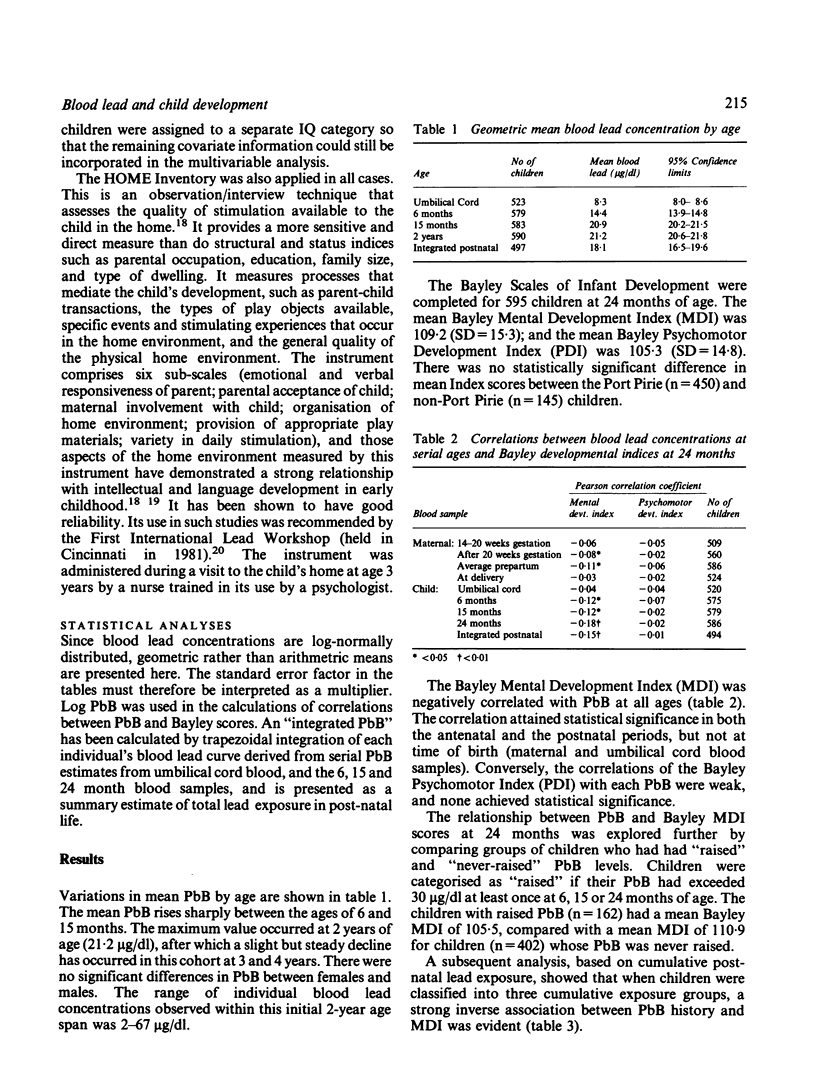
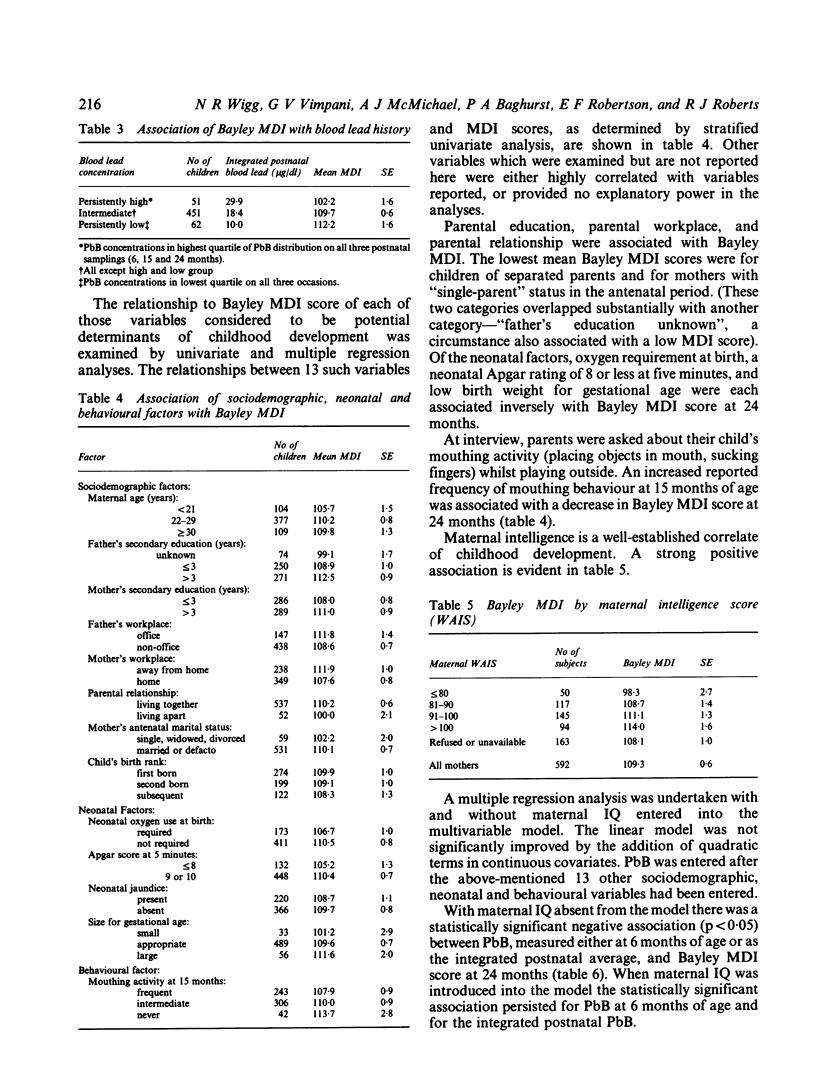
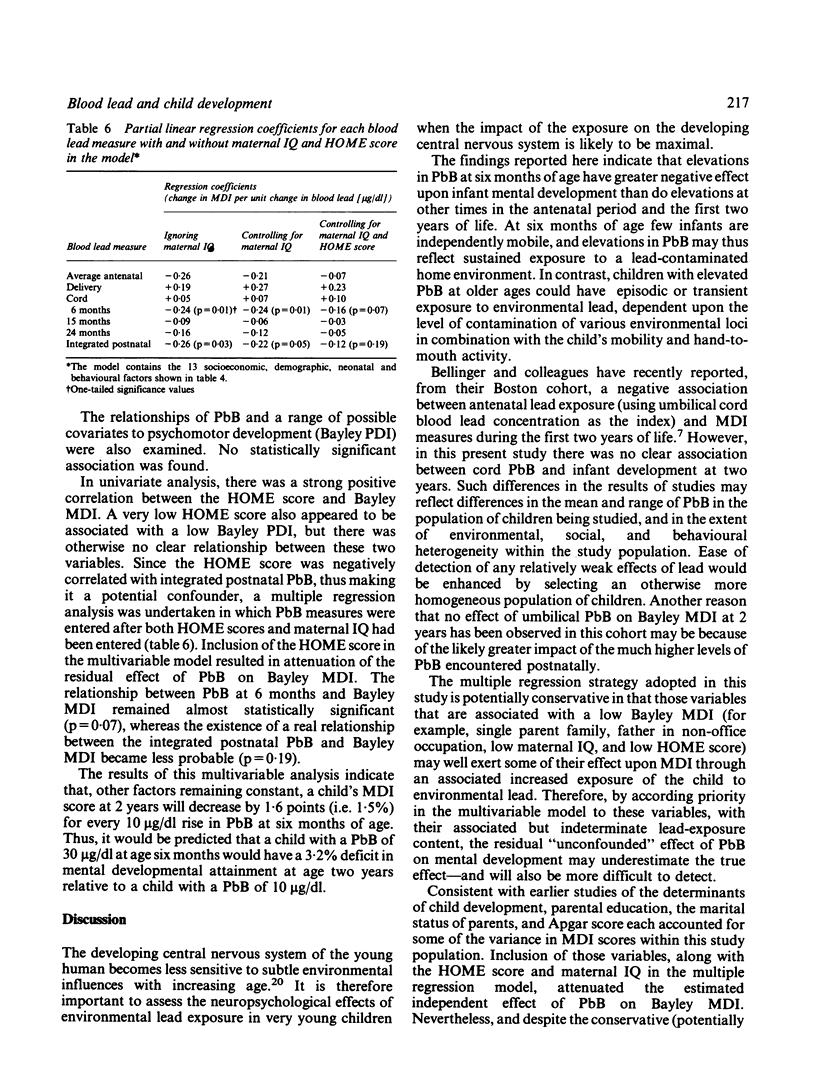
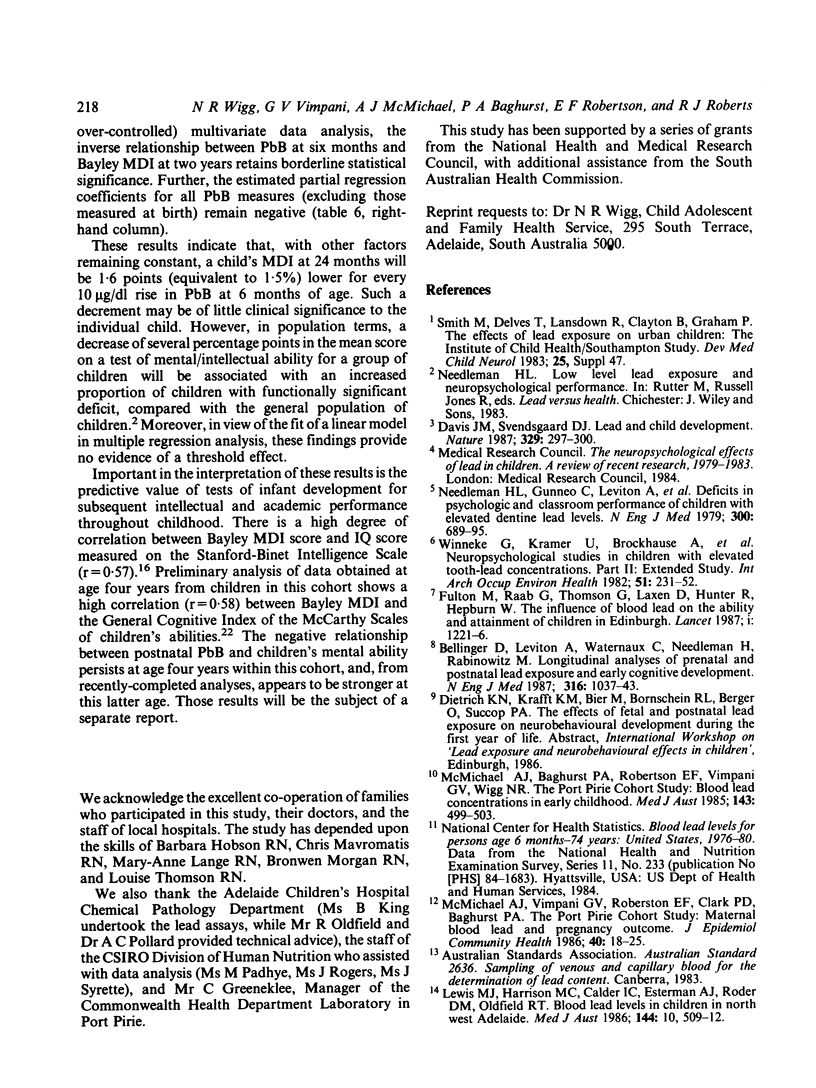
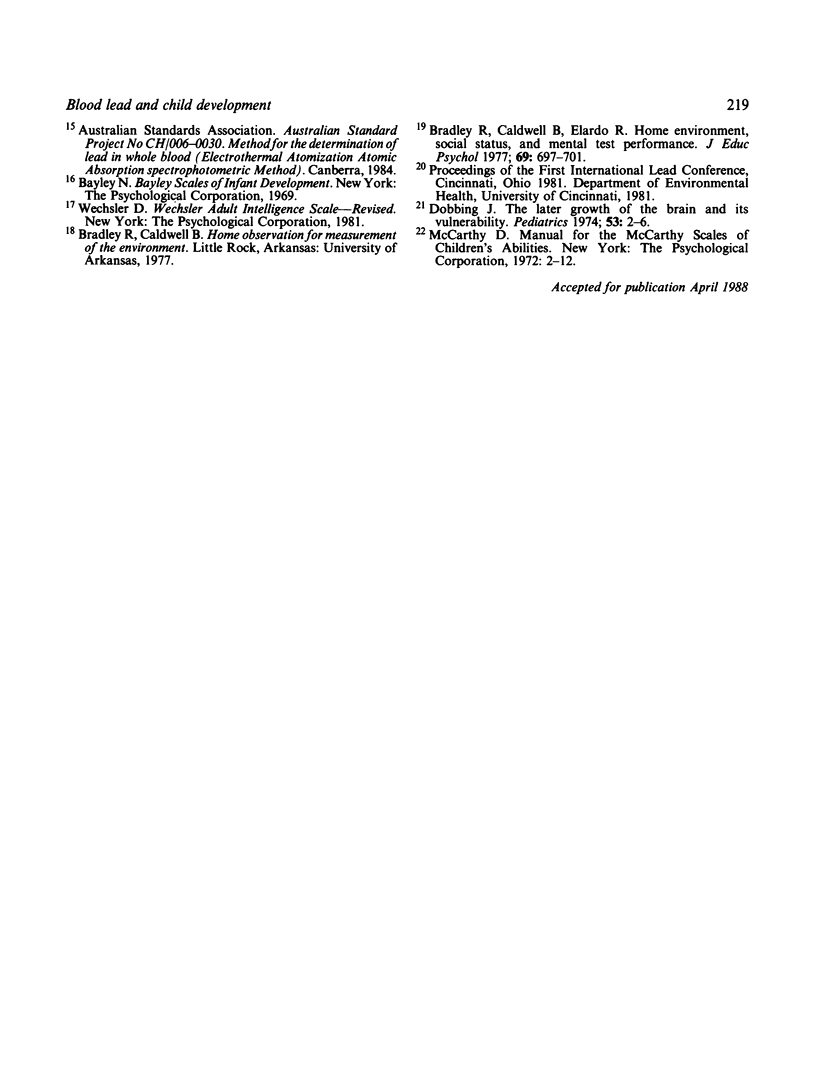
Selected References
These references are in PubMed. This may not be the complete list of references from this article.
- Bellinger D., Leviton A., Waternaux C., Needleman H., Rabinowitz M. Longitudinal analyses of prenatal and postnatal lead exposure and early cognitive development. N Engl J Med. 1987 Apr 23;316(17):1037–1043. doi: 10.1056/NEJM198704233161701. [DOI] [PubMed] [Google Scholar]
- Davis J. M., Svendsgaard D. J. Lead and child development. Nature. 1987 Sep 24;329(6137):297–300. doi: 10.1038/329297a0. [DOI] [PubMed] [Google Scholar]
- Dobbing J. The later growth of the brain and its vulnerability. Pediatrics. 1974 Jan;53(1):2–6. [PubMed] [Google Scholar]
- Fulton M., Raab G., Thomson G., Laxen D., Hunter R., Hepburn W. Influence of blood lead on the ability and attainment of children in Edinburgh. Lancet. 1987 May 30;1(8544):1221–1226. doi: 10.1016/s0140-6736(87)92683-3. [DOI] [PubMed] [Google Scholar]
- McMichael A. J., Baghurst P. A., Robertson E. F., Vimpani G. V., Wigg N. R. The Port Pirie cohort study. Blood lead concentrations in early childhood. Med J Aust. 1985 Nov 25;143(11):499–503. [PubMed] [Google Scholar]
- McMichael A. J., Vimpani G. V., Robertson E. F., Baghurst P. A., Clark P. D. The Port Pirie cohort study: maternal blood lead and pregnancy outcome. J Epidemiol Community Health. 1986 Mar;40(1):18–25. doi: 10.1136/jech.40.1.18. [DOI] [PMC free article] [PubMed] [Google Scholar]
- Needleman H. L., Gunnoe C., Leviton A., Reed R., Peresie H., Maher C., Barrett P. Deficits in psychologic and classroom performance of children with elevated dentine lead levels. N Engl J Med. 1979 Mar 29;300(13):689–695. doi: 10.1056/NEJM197903293001301. [DOI] [PubMed] [Google Scholar]
- Winneke G., Krämer U., Brockhaus A., Ewers U., Kujanek G., Lechner H., Janke W. Neuropsychological studies in children with elevated tooth-lead concentrations. II. Extended study. Int Arch Occup Environ Health. 1983;51(3):231–252. doi: 10.1007/BF00377755. [DOI] [PubMed] [Google Scholar]


